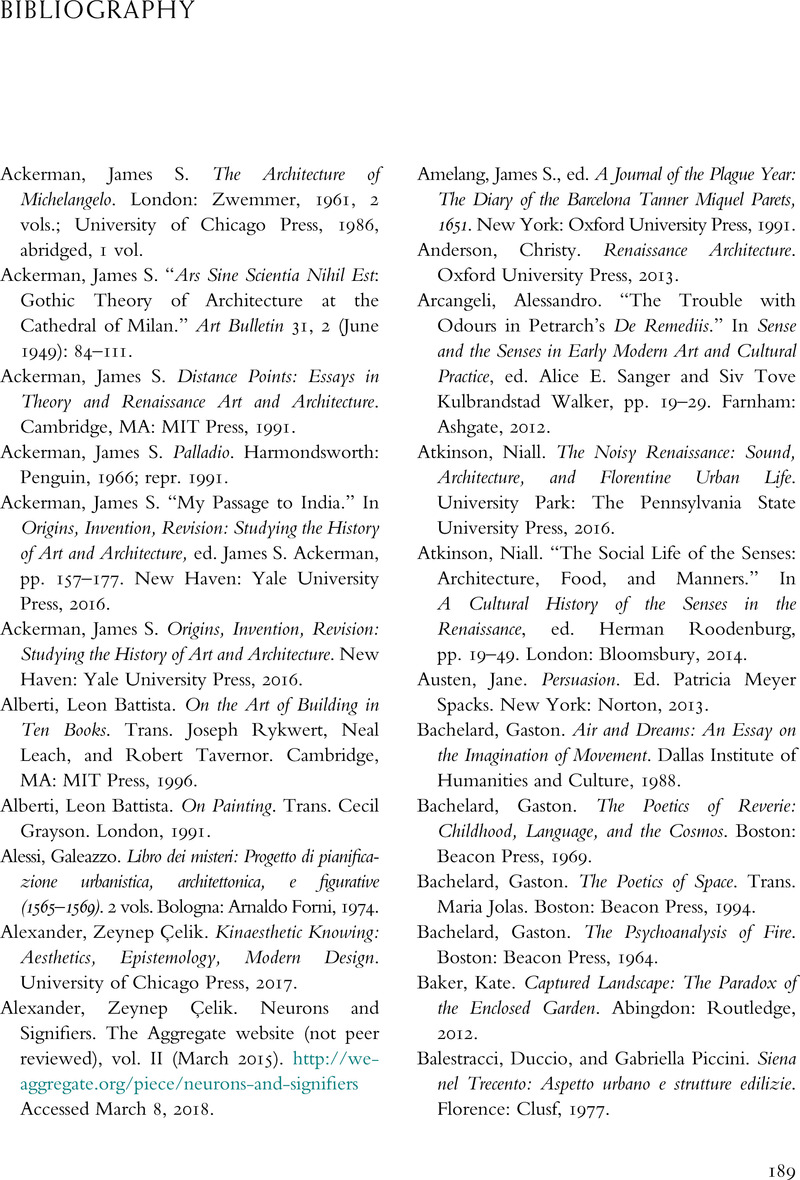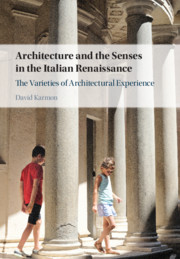Book contents
- Architecture and the Senses in the Italian Renaissance
- Architecture and the Senses in the Italian Renaissance
- Copyright page
- Dedication
- Table of Contents
- Illustrations
- Preface
- Acknowledgments
- One A Sense of Renaissance Architecture
- Two Architecture and the Imagination
- Three Movement in the Built Environment
- Four The Building of Devotion
- Five Sensations of Health and Illness
- Epilogue
- Bibliography
- Notes
- Index
- References
Bibliography
Published online by Cambridge University Press: 30 April 2021
- Architecture and the Senses in the Italian Renaissance
- Architecture and the Senses in the Italian Renaissance
- Copyright page
- Dedication
- Table of Contents
- Illustrations
- Preface
- Acknowledgments
- One A Sense of Renaissance Architecture
- Two Architecture and the Imagination
- Three Movement in the Built Environment
- Four The Building of Devotion
- Five Sensations of Health and Illness
- Epilogue
- Bibliography
- Notes
- Index
- References
Summary

- Type
- Chapter
- Information
- Architecture and the Senses in the Italian RenaissanceThe Varieties of Architectural Experience, pp. 189 - 204Publisher: Cambridge University PressPrint publication year: 2021



